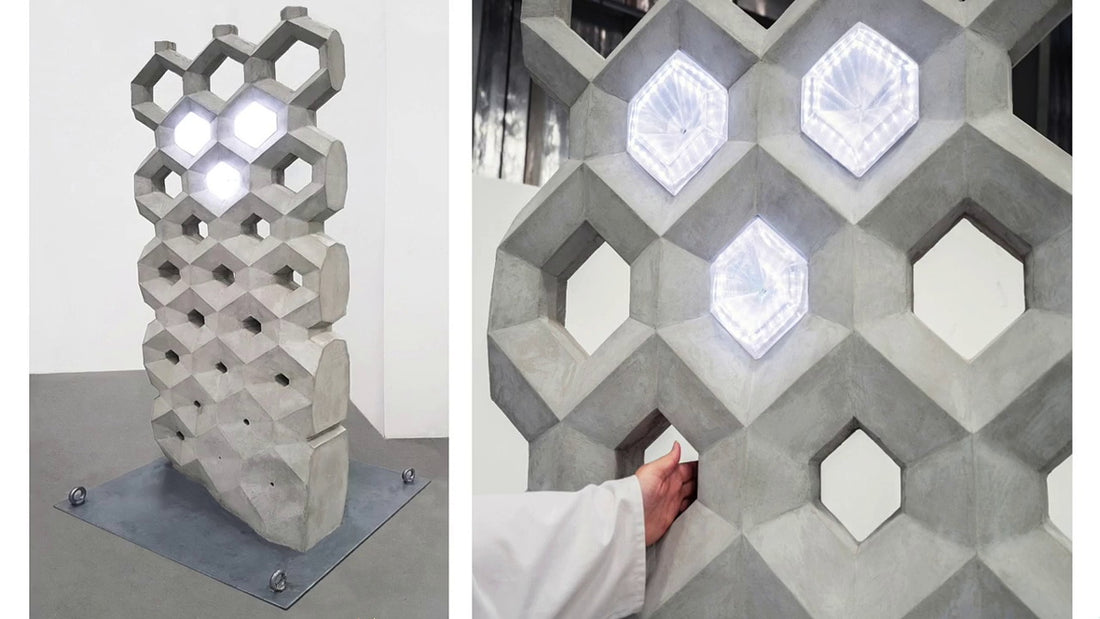Technological development in the world has taken the construction industry to a new level. One of the most used construction materials, concrete, also participated in this revolution. Smart concrete is one of those inventions that is making the world think differently.
Concrete has long been a popular composite material for many types of structures. One of its weaknesses is the concrete's lack of resilience, which can quickly lead to cracks. Monitoring cracks in concrete structures and controlling their spread has become extremely popular. These initiatives are fundamental to the rapid repair, safety and long-term durability of critical infrastructures. Non-destructive testing Several methods have already been used to meet demand. However, the tests are still considered expensive because they require the attachment or incorporation of sensors into structures.
Dr. Deborah DL Chung of the State University of New York at Buffalo developed smart concrete. To improve its ability to detect stresses or strains while maintaining its excellent mechanical properties, smart concrete is reinforced with carbon fiber in the range of 0.2 to 0.5 percent by volume.
The electrical resistance of concrete can be improved by mixing a small amount of short carbon fibers in an ordinary concrete mixer in response to load or tension. The contact between the fibers and cement matrix is changed when the concrete is deformed or stressed, which in turn affects the electrical volumetric resistance of the concrete. Electrical resistance can be measured to determine charge. To monitor the internal health of structures and respond to earthquakes, smart concrete can detect small structural defects before they become serious.
Self-sensitive concrete, self-adaptive concrete, self-healing concrete and other types of smart concrete fall into this very broad group of materials.
A subset of smart concrete that was first proposed and widely and systematically researched is self-sensing concrete. Excellent mechanical properties, durability, long service life and easy installation and maintenance are the main advantages of self-sensing concrete.
Self-supporting concrete is widely used in civil infrastructure such as skyscrapers, highways, bridges, airport runways and continuous slab sleepers for high-speed trains, dams and nuclear power plants. It is particularly promising for structural health monitoring, traffic detection, etc.
The use of smart concrete to ensure the sustainable development of concrete materials and structures is self-aware concrete. The traditional concrete materials industry will therefore undergo a profound change that should have a positive impact on the economy, society and the environment.


Smart Types of Concrete
The various uses of Smart Concrete have taken the world to a new level. Let's look at the main types of such developments.
- Crystal clear sealing
- Improve durability
- Concrete Monitoring Sensors
- Use of nanotechnology
The technological development of construction materials has advanced the industry. However, it should be noted that we must be very careful with material defects. The use of these materials can only be carried out after careful examination. Although there is a material safety factor that indicates problems with materials, it is very important to have confidence in them when using new materials.
Repair of concrete structures
As the technology has not yet achieved the necessary advances for use in large-scale applications, the use of smart concrete for structural repairs has not yet been proposed. Smart concrete can be a useful tool for repair interventions because it automatically warns if a crack reopens or if new damage forms in a section of the structure that has been repaired. The material must have expansion properties to absorb local static stresses and adhere as best as possible to the restored structure before it can be used for structural repairs. Furthermore, its shrinkage and creep properties must be thoroughly investigated.
Traffic detection
The control and implementation of traffic operations largely depends on vehicle recognition. Traffic data is currently collected and processed using various detection technologies. These traffic statistics are mainly collected by sensors placed near or under the road.
An innovative approach to developing vehicle detection sensors is self-sensing concrete. Because they are made of concrete materials, automatic detection concrete vehicle detection sensors have several advantages over traditional detectors, including easy installation and maintenance, large detection range, low cost, high level of interference immunity, long life useful and good compatibility with road surfaces. .
Traffic flow rates, vehicle speeds, traffic density and even en-route weighing can be detected using self-sensing concrete embedded in road or bridge sections. They can be used not only to detect cars on the roads, but also in parking automation systems. Furthermore, these self-sensing road or bridge sections can provide data support for structural health monitoring and condition assessment of transportation infrastructure.
Other benefits of Smart Concrete
- Real-time monitoring is possible
- Smart concrete is stronger than traditional concrete
- Construction costs would be higher than with conventional concrete. However, the total cost including sensor equipment to be installed in conventional concrete would be higher than in smart concrete.
- Its self-healing properties cannot be achieved using conventional methods. Helps heal cracks
- Reduces reinforcement corrosion
- Reduce concrete repairs with low concrete deterioration .

